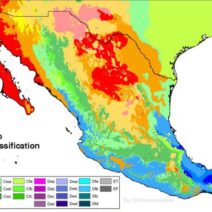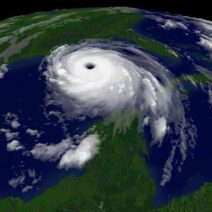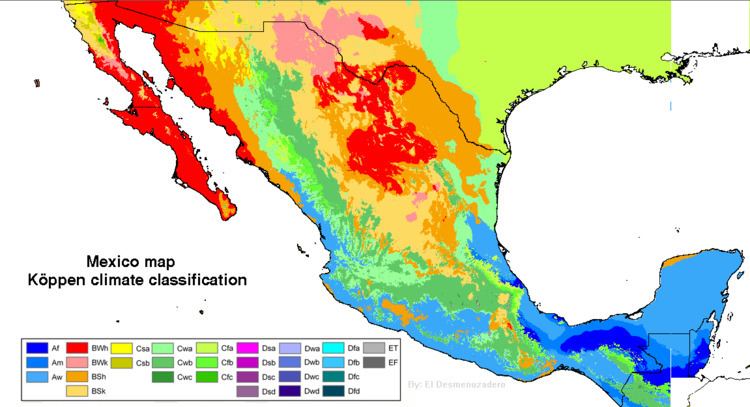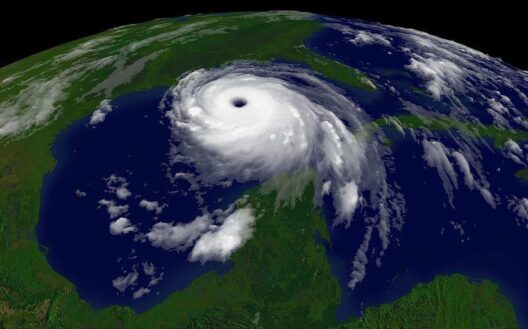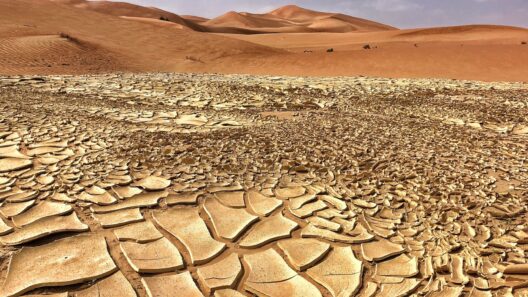Mexico is a nation of remarkable climatic diversity, a tapestry woven from the vast array of geographical features that define its landscape. The climate ranges from arid deserts to vibrant tropical coasts, creating distinct ecological zones that affect habitats, local economies, and lifestyles. This variety brings forth an intriguing complexity that captivates both scientists and travelers alike. Understanding Mexico’s climate can foster a deeper appreciation for its natural beauty and the intricate systems at work.
The country’s climate is primarily determined by its geographical positioning and topographical diversity. Mexico stretches from the northern borders, sharing a boundary with the United States, down to the tropical expanse of Central America. Such a range predisposes it to numerous climatic influences, including arid desert conditions, temperate highlands, and humid tropical regions. The interplay between the oceanic and continental air masses plays a significant role in shaping these climates.
To elucidate Mexico’s climatic zones, one can categorize them into several distinct areas: the northern desert, the central plateau, coastal regions, and southern tropics. Each zone contributes to the rich ecological diversity seen throughout the country.
The northern region of Mexico is dominated by arid and semi-arid deserts. Consider places like the Sonoran and Chihuahuan deserts, where temperatures soar during the summer months, often reaching above 100°F. Rainfall is scarce, with averages as low as a few inches annually. This environment is characterized by xerophytic vegetation such as cacti, succulents, and hardy shrubs that have adapted over millennia to conserve water. The stark beauty of the desert supports unique wildlife, including the iconic roadrunner and rattlesnakes, presenting a fascinating study of adaptation and survival.
Moving southward, the landscape transforms into the vast central plateau, an area known for its temperate climate. This highland region, home to Mexico City and other major urban centers, experiences a more moderate climate. Elevations in this zone vary between 5,000 and 7,500 feet, contributing to cooler temperatures than those found in the lowlands. The rainy season, from May through October, brings a significant amount of moisture, primarily in the form of afternoon thunderstorms. This climate supports agriculture and is responsible for the sprawling fields of corn, beans, and other staple crops that have sustained the Mexican populace for centuries.
Transitioning to the coastal areas, especially along the Gulf of Mexico and the Pacific Ocean, one encounters a different climate altogether. Coastal regions enjoy a tropical climate influenced by ocean currents, characterized by high humidity and substantial rainfall. In these zones, summers are long, hot, and humid with temperatures often exceeding 90°F. The winter months bring a reprieve, leading to a more temperate atmosphere ideal for tourism and agriculture. This humid environment cultivates lush rainforests and mangroves, supporting an array of wildlife, from colorful birds to diverse marine life.
The southern part of Mexico provides a striking contrast with its tropical rainforests. States like Chiapas and Tabasco experience a tropical wet climate with significant precipitation year-round. These areas host some of the most biologically diverse ecosystems on the planet, protecting a myriad of species. The challenge of climate change poses heightened risks for these ecosystems, leading to discussions about conservation and sustainable practices vital for the preservation of such rich biodiversity.
Climate change has become an omnipresent specter affecting Mexico’s climatic conditions, with tangible impacts being observed across the nation. Rising temperatures, altered precipitation patterns, and increased frequency of extreme weather events are generating substantial challenges. Agriculture, the backbone of many rural communities, faces uncertainties in crop yields due to erratic rainfall. In coastal areas, rising sea levels threaten to inundate vital habitats and communities.
As Mexico grapples with these pressing challenges, discussions surrounding climate adaptation and resilience are paramount. Initiatives aimed at sustainable practices can incentivize the utilization of renewable energy sources, promote conservation of natural habitats, and enhance food security. Understanding the rich tapestry of Mexico’s climate is not just an academic pursuit; it forms the basis for developing solutions to safeguard the environment for future generations.
Beyond mere observation, the intricate climate of Mexico invites a deeper exploration of interrelationships between environmental systems and human activity. Nurturing curiosity about these connections can catalyze impactful changes. For instance, engaging local communities in sustainable agriculture not only benefits the environment but also fortifies local economies. By prioritizing sustainability, Mexico can lead the way in demonstrating that ecological balance is achievable in the face of climate-related challenges.
Ultimately, exploring Mexico’s climate nuances promises a shift in perspective—a realization that amidst its deserts, mountains, and coasts lies a complex narrative of resilience, transformation, and adaptation. As awareness grows surrounding these climatic zones, so too does the opportunity for innovation and collaboration in the realm of environmental activism. Harnessing this awareness can foster stewardship of one of the world’s most biodiverse nations, ensuring its landscapes can flourish for generations yet to come.
